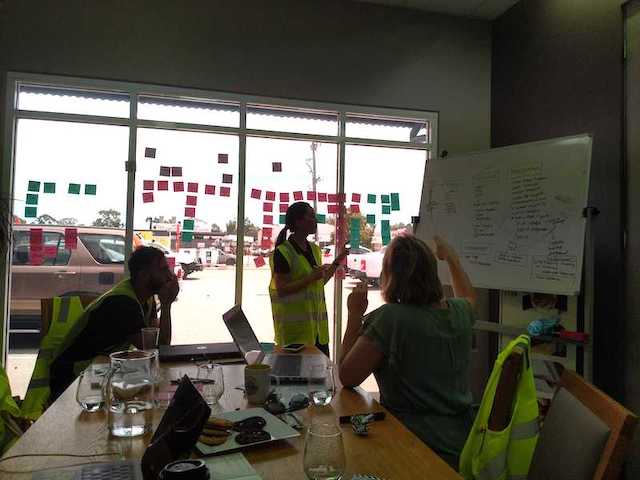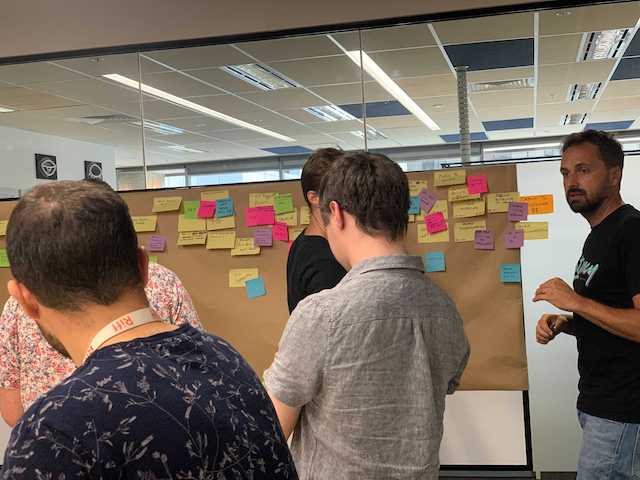The Competitive Advantage of UX
Tags: ux devops design competitive advantage optimisationAt Mechanical Rock, there is a reciprocal relationship between DevOps and UX throughout a project. We’ve noticed that this relationship accelerates delivery because UX provides insight into the gaps, challenges and opportunities of a problem space, to improve user experience, and deliver a return on investment (ROI).
I wanted to better understand the relationship between UX and DevOps. So, I’ve put together four reasons why UX in DevOps provides a competitive advantage.
UX in DevOps
“The cultural shift toward agile and DevOps practices affords a great opportunity, but not if UX is left out of the loop. They are the voice of the user”, (Talia Lavie). I’d go one step further and argue we are not only the voice of the user, we are the bridge between the user and business; intentional and good design considers both the user and the business. According to Forrester, every one dollar invested in UX yields a hundred dollar return; a return of 9,900% and considering poor design contributes to 86% of users deleting or uninstalling an app (Ewelina Luszczek) good design is a differentiator.
We need to bring UX into the conversation because “as technology products have become more commoditised, UX has become a competitive differentiator”, (Talia Lavie) and we know that long term competitive advantage is not met by commoditisation that focuses only on technical details as the differentiator. It is the usability of the product or service that offers long term competitive advantage (Alex Castrounis). For example, Jared Spool explains competitive advantage comes from understanding the competition’s customers. Such insight “could drive the competitor’s customers to switch to our product or service if we built something that truly embodied their needs”.
At Mechanical Rock, we achieve this by bringing UX together with DevOps, which enables lean development because the problem space is understood, solutions are tested with users prior to the build and iterations are based on data. Moreover, designers and developers work together with a shared context reducing misunderstanding and errors. Whereas, without UX, products often do not meet stakeholder or user needs (Barnaby Dracup). In 2020, failed development projects cost $260 billion (Roberto Torres).
Based on this, I believe value and subsqeuent competitive advantage is greatly enabled by understanding how to optimise the relationship between UX and DevOps.
1. Discovery
At Mechanical Rock, before we start a piece of design work, we run in depth discovery sessions. Developers, designers and clients are involved. In these sessions, we understand the problem space, dive deeper into the current state and user journey. A shared understanding is fostered as both designers and developers have context of the problem space.
Without this session, it is too easy to make assumptions and be driven by the client leading to poor delivery. For example, on a recent project, the client was adamant that users felt fearful of artificial intelligence and machine learning; however, our user research suggested otherwise, which opened up new opportunities and allowed us to deliver solutions driven by user data. This is an example of how UX provides visibility into the problem space and user needs which leads to strong delivery.

Karen Cheng, Principal Design Consultant, running a discovery workshop with a client
2. Removal of Silos
DevOps is about removing waste to support the flow of value through a system. This is enabled by the removal of silos, feedback loops and a shared understanding. Value in DevOps concerns whether features add value or are waste. Waste being a redundant functionality that is not useful. The flow of value through a system is impeded by constraints such as silos.
Within product teams, silos occur when different specialisations work separately. Teams work in a vacuum, doing only their part without wider considerations, constraints, ideas and critiques of the larger team. For example, when development is siloed from UX, designers do not have visibility into software constraints, and therefore the system in which a user experience operates in. Decisions are made with partial context; impeding this flow and therefore value. Considering UX offers a long term competitive advantage “it’s important to understand these relationships from a UX perspective because they illuminate how interactions between enterprise systems can exert significant impacts on the user experience”, (Amy Chess). Removal of silos allows continuous feedback loops and a shared understanding to foster between designers and developers which removes constraints and enables flow. Without that it is no different to pre-DevOps days.
At Mechanical Rock, we work in cross-functional teams where designers work closely with developers, throughout the entire project, which fosters feedback loops and supports a shared understanding. Moreover, developers and designers are involved in all meetings and decisions, such as example mapping sessions.
3. Feedback Loops
The removal of silos enables feedback loops which reduce the length of UX cycle and capital. The longer the cycle, the more capital dwindles (Kai Brunner). For example, in his article on Understanding Feedback Loops in DevOps, Ant Weiss suggests the most important feedback loops are between people and teams, “focus on human communication-based loops rather than on automated ones”.
Reciprocal communication between designers and developers reduces miscommunication and latency. This allows both developers and designers to form data driven decisions from a shared understanding. It’s these joint decisions that reduce constraints and the impediment of flow through a system reducing capital burn.
4. Shared Understanding
At Mechanical Rock we run value stream mapping (VSM) workshops that foster a shared understanding between clients, designers and developers about the current state (Ant Weiss ).
It’s a method used to map value from idea to customer; looking at the processes, pain points, latency and actors involved that may impede or support the flow of value through a system. Read more about VSM from Patrick Anderson.
Including designers in a VSM workshop provides them with greater context on the current system, the constraints, gaps and opportunities and how that feeds into poor user experience.
Without this context, designers have an incomplete understanding about the current state and no shared understanding between designers and developers. This can quickly lead to miscommunication and assumptions along with potential re-work on designs. This is not an effective approach. Whereas a shared understanding as Kai Brunner states allows problems to be “solved much faster without the drag of a struggle”.
An approach such as a VSM workshop is highly effective in fostering a shared understanding between designers, developers and clients. VSM provides a space for UX and DevOps to work together and this is “essential for DevOps teams to ensure they solve the right problems and are understanding the user’s real needs”, (Barnaby Dracup). And this supports a long term competitive advantage.

Hamish Tedeschi, CEO, running a VSM workshop with a client
The world is a Better Place with UX in DevOps
DevOps enables the fast flow of work in software development, when you use UX to understand the problem space, it becomes a fast flow of value. While DevOps without UX is unfortunately common it does not provide long term competitive advantage that is necessary in an over commoditised market. Visibility into the problem space, users and market opportunity provides insights that are otherwise missed or worse, ignored.
If your curiosity is piqued and you want to learn more or have a chat, get in touch. I’m a sucker for an almond chai latte, my shout! Or if you can see the advantage of bringing UX into DevOps contact-us, we’re always up for a chat.
Lucy is curious about the role of design in shaping a future that is ethical, representative and inclusive. She believes design needs to play an intentional and meaningful role in shaping our future. This is why it is imperative technology is designed ethically, accessibly and inclusively.
